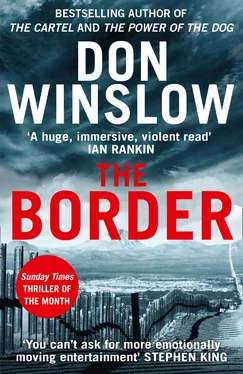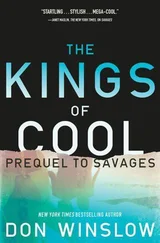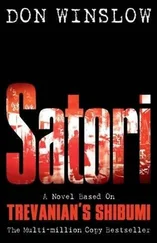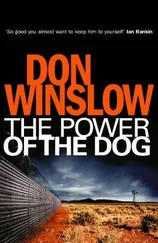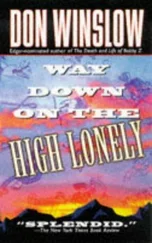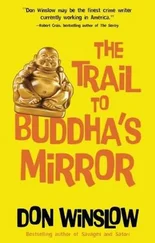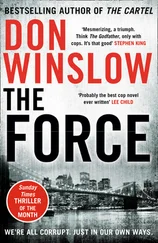Three thousand dollars is lunch money to my old man, Ric thinks, but a fortune to a poor farmer in rural Guerrero.
He gets out of the Jeep to watch the rayadores work the patch.
They make good money, he learns. A productive worker can make thirty to forty dollars a day, seven times what her parents can make working in fields of corn or avocado groves. The rayadores are mostly teenagers and mostly girls, because their hands are smaller and nimbler. Wearing small razor blades attached to rings on their thumbs, they carefully slice tiny slits into the opium pods until the gum seeps out like a teardrop.
It’s delicate work: Cut too shallow and you get no sap. Cut too deep and you ruin the pod, a disaster to profitability. The rayadora will come back to the same plant again—a pod can be scored as many as seven or eight times to produce the maximum amount of sap.
Once the cut is made, the seeping liquid is allowed to harden into brown gum and the rayadores use the razors to gently scrape the gum into pans, then take it to sheds or barns where other workers roll it into balls or cakes, which can be stored, for years if necessary.
When the farmer has harvested enough opium paste, he contacts the middleman, who comes and collects it, pays for it, and takes it to a lab to be processed into cinnamon heroin. From there it goes to a transshipment point like Tristeza, where it’s loaded onto buses for what’s called “shotgun shipping” north.
The middleman marks it up by as much as 40 percent—up to $2,100 a kilo—and then sells it to the cartel, which, again, controls the price by being virtually the only buyer.
A kilo of raw heroin will sell for somewhere between $60,000 and $80,000 in the States.
“The margin is excellent,” Núñez says, “and even when you factor in the costs of transport, smuggling, security and, of course, bribes, we can still undersell the American pharmaceuticals and make a healthy profit.”
Ric is a city kid, but he can’t help but appreciate the beauty of the scene in front of him. It’s idyllic. The air is crisp and clean, the flowers beautiful, and the sight of the young girls with their white smocks and long black hair moving quietly and efficiently as they do their work is peaceful beyond description, beautiful, really, in its simplicity.
“It’s gratifying to know,” Ric hears his father say, “that this business gives so many people gainful employment at a salary they could never otherwise realize.”
There are hundreds of these farms scattered around Guerrero.
Plenty of work for everyone.
Yeah, Ric thinks, we’re social benefactors.
He gets back in the Jeep and the convoy snakes its way down the mountain, the sicarios on the lookout for bandits.
Damien Tapia, the Young Wolf, watches the convoy through the telescopic sights of a sniper rifle.
From the cover of trees on the facing slope, he has the head of the Sinaloa cartel, Ricardo Núñez—one of the men who made the decision to kill his father—literally in the crosshairs.
When Damien was a boy, his father was one of the three bosses of the Sinaloa cartel, along with Adán Barrera and Nacho Esparza, two men Damien thought of as his uncles. The Tapia brothers were powerful then—Martín as the politician, Alberto the gunman, and his father, Diego, the undisputed leader.
When Tío Adán was captured in the States, it was Damien’s father who took care of the business. When Tío Adán was transferred back to Mexico, to Puente Grande prison, it was Damien’s father who arranged for his protection. When Tío Adán got out, it was Damien’s father who fought alongside him to take Nuevo Laredo from the Gulf and the Zetas.
They were all friends then, the Tapias, the Barreras, the Esparzas. In those days, Damien looked up to the older boys like Iván and Sal and Rubén Ascensión and Ric Núñez, who was closer to him in age. They were his buddies, his cuates . They were Los Hijos, the sons who would inherit the all-powerful Sinaloa cartel, and they would run it together and be brothers forever.
Then Tío Adán married Eva Esparza.
Little Eva is younger than I am, Damien thinks now as he centers the sights on Ricardo Núñez’s graying temple; we used to play together as kids.
But Tío Nacho wanted Baja for Iván, and he pimped his daughter out to get it. After Eva married Tío Adán, the Tapia wing of the cartel became the stepchild—slighted, ignored, pushed to the side. The very night Adán was popping little Eva’s cherry, his tame federales went to arrest Damien’s uncle Alberto and shot him dead. It turned out that Adán had sold out the Tapias to save his nephew Sal from a murder charge.
My father, Damien thinks, was never the same after that. He couldn’t believe the men he called his primos, his cousins—Adán and Nacho—would betray him, would kill his flesh and blood. He started to get deeper and deeper into the Santa Muerte, deeper into the coke. The anger, the grief, ate him alive and the war he launched to get revenge tore the cartel to pieces.
Shit, Damien thinks, it tore the whole country to pieces, as Diego allied the Tapia organization with the Zetas to fight the Barreras and the Esparzas, his old partners in the Sinaloa cartel.
Thousands died.
Damien was only sixteen that day, just after Christmas, when the marines tracked his father down to an apartment tower in Cuernavaca, went in with armored cars, helicopters, and machine guns, and murdered him.
He keeps the photo on his phone as a screen saver. Diego Tapia, bullet holes in his face and chest, his shirt ripped open, his pants pulled down, dollar bills tossed over him.
The marines did that to his father.
Killed him, mocked his corpse, put the disgusting photos out on the net.
But Damien always blamed Tío Adán.
And Tío Nacho.
His “uncles.”
And Ricardo Núñez, Ric’s father.
What they did to Diego Tapia is unforgivable, Damien thinks. My father was a great man.
And I am my father’s son.
He wrote a narcocorrido about it, put it out on Instagram.
I am my father’s son and always will be
I’m a man of my family
A man of the trade
And I’ll never turn my back on my blood
This is my life until I die.
I’m the Young Wolf.
His mother has begged him to get out of the business, do something else, anything else, she’s already lost too many loved ones to the trade. You’re handsome, she tells him— movie star, rock star, Telemundo handsome, why don’t you become an actor, a singer, a television host? But Damien told her no, he wouldn’t disrespect his father that way. He swore on Diego’s grave to bring the Tapias back to where they belong.
At the top of the Sinaloa cartel.
“They stole it from us, Mami,” Damien told his mother. “And I’m going to take back what they stole.”
Easy to say.
Harder to do.
The Tapia organization still exists, but with only a fraction of the power it used to have. Without the leadership of the three brothers—Diego and Alberto dead, Martín in prison—it operates more like a group of franchises giving nominal allegiance to the Tapia name while they each operate independently, trafficking coke, meth, marijuana and now heroin. And they’re scattered, with cells in southern Sinaloa, Durango, Guerrero, Veracruz, Cuernavaca, Baja, Mexico City and Quintana Roo.
Damien has his own cell, based in Acapulco, and while the other cells give him a certain level of respect because of who his father was, they don’t view him as the boss. And Sinaloa—maybe out of guilt over what they did to his family—tolerates him as long as he’s subservient and not looking to get revenge.
Читать дальше
